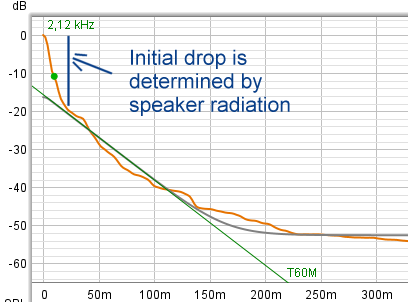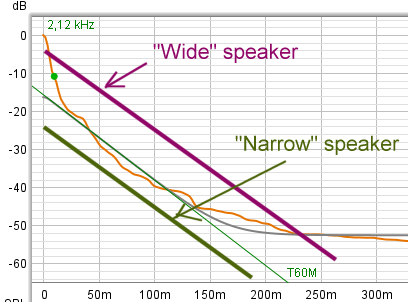Hello,
I want to discuss here the differences of wide and narrow directivity of very good speakers in context with room acoustics and more.
One perfect speaker for all rooms. I don't think so.
On conclusion of the research at of
@Floyd Toole and others are that a good speaker sounds good in any room. In general I will agree with this statement, but if you have a closer look at only very good speakers and different rooms and positions of the speakers and the listening position you will find that the perfect speaker is room dependent.
Listening distance
The listening distance is one of the most important parameter here. If you have a look at stereo you will find that you will need a amount of later reflections to get a feeling of "been surrounded by the sound". Omnidirectional speaker achieve this very well since there are more reflections of the room. But you will have a disadvantage with these speakers, the details of the sound will be masked by the reflections which makes the sound "soft", "washy" or "inexact". On the opposite side is a headphone. You have no additional reflections and the sound is "clear" or "exact" but you will have a poor or no feeling of being surrounded by the sound (binaural recording are different but I will not go into detail here). So there is a sweet spot of the ratio of direct sound to later reflected sound. It can be seen in the
EBU recommendations on page 6 where the reverberation time at the listening position is recommended. I think this recommendations are valid.
Short listening distance wide directivity
If you follow this path you will need a speaker with wide directivity if you listen at short listening distances.
Linkwitz invented a speaker which creates a good feeling of being surrounded by the sound despite the short listening distance. which is very rare to get. This is done by having a omnidirectional speaker and put them in the middle of the room.
Long listening distance narrow directivity
If you have a longer listening distance you will need a speaker with a narrow directivity to get the recommended reverberation time at the listening position with the speaker. And the speaker have do be beam a lot to achieve the goal. E.g. at 2.5m a typical 2 way speaker with 17cm bass beams a lot to wide.
There are plenty other parameter which are important
How constant is the directivity is over frequency, speaker with narrow beam and extra backfiring speaker or dipol like characteristics, first side wall reflection absorb or not, side wall reflections at 60° ideal?, unsymmetric placement is bad but what differences are still okay...
How to get perfect sound?
And the question which speaker room combination is perfect and how should the ultimate goal look like? A "standard" speaker with narrow directivity in a studio like dry room? All horns oben back in a big room with diffusing walls? Line arrays (horizontal wide and vertical narrow diretivity)?
Best
Thomas




